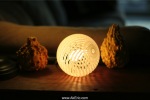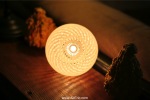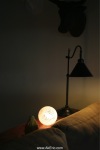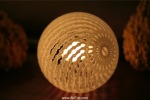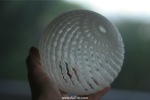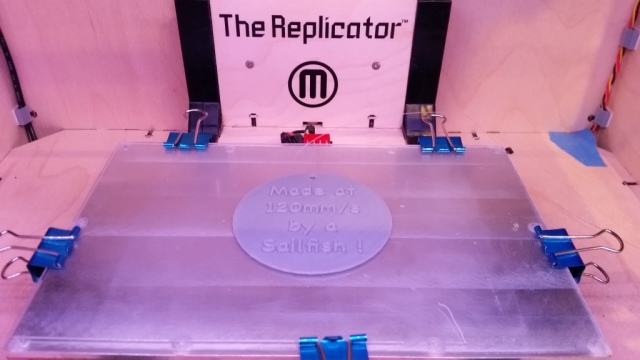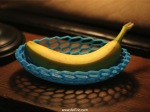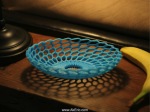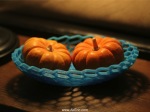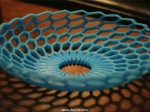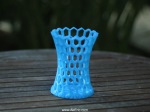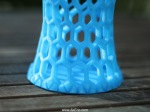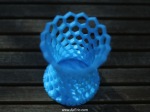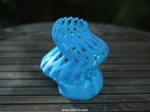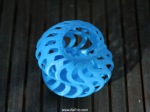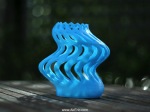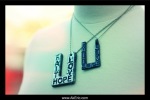New 3d print: Light Orb 01
I used the code for my latest “hex” designs on a sphere: The result is a complex shape that still prints nicely with no supports on a FFF style machine. It’s just under 6″ across. It’s also the first real print I’ve done since my upgrade to Sailfish firmware.
As designed, the hole in the base will fit a votive candle: I wouldn’t put a real votive in there, but LED votives work well. It will also lay flat on this base without rolling around.
It also looks good as a large ornament on your Christmas tree 
For the illumination hardware, I purchased a “snap-in candelabra base socket” from Home Depot (picture included), and a 45w candelabra bulb: Note that the bulb hot, but as of yet I’ve not had any issues since the print itself is so open. If you want something more decorative, I’d go 25w.
Get more info and download the file for print over on Thingiverse.
